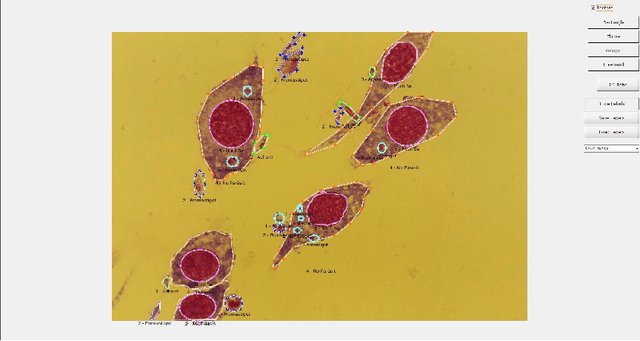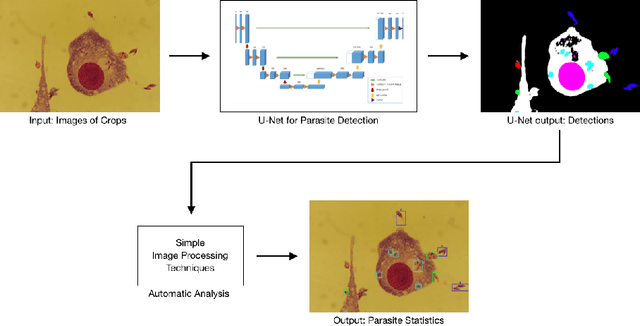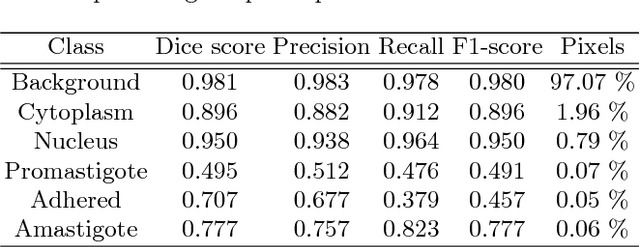Get our free extension to see links to code for papers anywhere online!Free add-on: code for papers everywhere!Free add-on: See code for papers anywhere!
Albert Aparicio
Leishmaniasis Parasite Segmentation and Classification using Deep Learning
Dec 30, 2018Authors:Marc Górriz, Albert Aparicio, Berta Raventós, Verónica Vilaplana, Elisa Sayrol, Daniel López-Codina
Figures and Tables:







Abstract:Leishmaniasis is considered a neglected disease that causes thousands of deaths annually in some tropical and subtropical countries. There are various techniques to diagnose leishmaniasis of which manual microscopy is considered to be the gold standard. There is a need for the development of automatic techniques that are able to detect parasites in a robust and unsupervised manner. In this paper we present a procedure for automatizing the detection process based on a deep learning approach. We train a U-net model that successfully segments leismania parasites and classifies them into promastigotes, amastigotes and adhered parasites.
* Articulated Motion and Deformable Objects, Series volume 10945 ,
2018, Springer International Publishing AG, part of Springer Nature
* 10th International Conference, AMDO 2018, Palma de Mallorca, Spain, July 12-13, 2018, Proceedings
* 10th International Conference, AMDO 2018, Palma de Mallorca, Spain, July 12-13, 2018, Proceedings
Via
 Add to Chrome
Add to Chrome Add to Firefox
Add to Firefox Add to Edge
Add to Edge